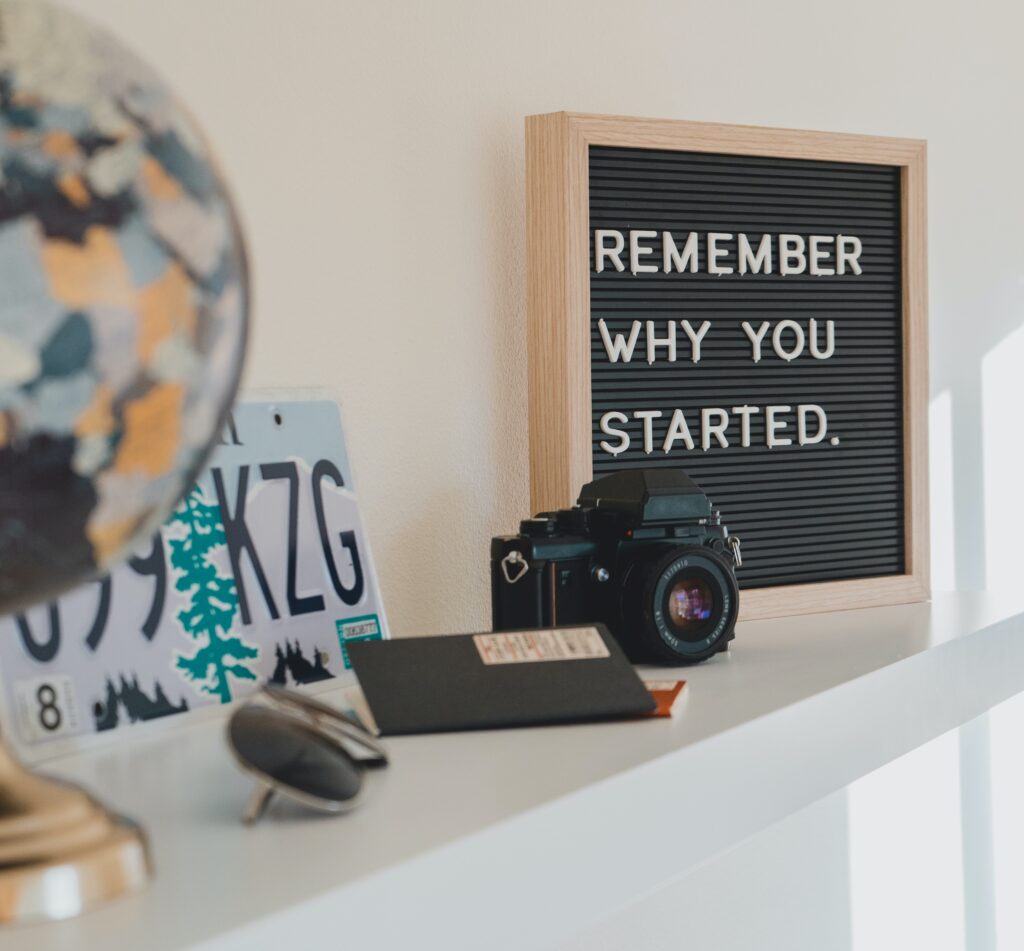June is Brain Awareness month in the US! As a result, I will be publishing a series of posts about building habits over the next four weeks. I’m all about exploiting the brain’s mechanisms to change behavior. Let’s get right into it!
What is a habit?
Merriam-Webster’s Definition:
Some key words in here: acquired, nearly involuntary, settled tendency, regularity
The fact of the matter is, a behavior isn’t a habit until you can do it without thinking. Remember when tying your shoes was a laborious task? Now you can likely do it in seconds, without thinking. That is a habit.
According to Charles Duhigg, author of The Power of Habit, a habit is made up of 3 components. First is the Cue, then the Behavior, and finally the Reward. Let’s use eating as an example. The cue is hunger (or boredom, or sadness), then you eat and are rewarded with dopamine.
Motivation

I personally believe that a compelling “why” can make anything possible. Ask yourself right now why you truly want to develop this habit. Write down why this habit is important to you and how it will make you feel when you get to a place where your performance has improved and you do it automatically. Write about how good it will feel when you become that behavior: the runner, or the polyglot, or the yogi.
Keep that paper in an accessible area, so that you can return to it on those days when you think you don’t have it in you.
I personally tend to struggle most with this step because it requires looking into the deep recesses of your mind, but it is worthwhile and incredibly effective. Humans need a compelling story to keep us motivated when shit hits the fan.
Now I’m going to break down parts one and three of a habit.
The Cue

You have to decide where you will incorporate this new behavior within your existing routine. Without a specific time and place to happen, habits can fall to the wayside, often because it’s too taxing to be constantly making the decision as to where to put it.
You need to have a visible and frequent cue for your habit. That will be the thing that signals to your brain it is time to do X behavior. This trigger has to be consistent, so for most people, it’s not a good idea to tie your behavior to the weather, for instance. The trigger also needs to be as frequent as you want the behavior to be.
One technique that helps me incorporate new habits is habit stacking. For instance, after I brush my teeth for the night, I stretch. The key is to stack the new behavior with one you already do automatically. This is using your pre-existing habits to your advantage and allows you to think a little bit less about building the new habit.
The cue can be as simple as an alarm on your phone, or as ‘complex’ as your cue being an activity in which you have down time. Example: if you always make a smoothie in the morning, while it is blending you could do 20 squats since you’re already committed to just standing there. Whatever it is, the cue MUST be highly visible, consistent, and frequent.
The Reward

Short and simple: an effective reward needs to be immediate and external. PRIDE IN YOUR ACCOMPLISHMENTS IS NOT AN EFFECTIVE REWARD. Trust me I’ve tried. You need something external so that there is a reason for a tired and agitated version of you to do this behavior.
My reward for stretching is that I get to go to sleep. I do not permit myself to even sit on my bed after the sun has set unless I have done my stretching routine. Another example of an effective reward is to eat breakfast or dinner immediately after exercising. When you know that a hearty, delicious meal is waiting on the other side of a tough workout, you can be sure your motivation to finish the workout is strong. Another is that you can read a chapter of a riveting book after you paint. Or watching a show after journaling.
One caveat you may have noticed is that these rewards require a bit of discipline. In my stretching case, I have to keep the promise to myself that I’ll stay out of bed otherwise the reward won’t work. I also use very specific conditions, for instance my bed ban only applies after the sun has set. That way, the discipline needed remains sustainable.
The thing is that nobody is going to punish you if you don’t follow your own rules. But eventually it wears on your spirit when you realize that you can’t trust yourself. Again, I know this from personal experience.
Looking Forward

The goal of any habit is to get past the line of automaticity, where you do the habit almost involuntarily. You want to take thinking out of it, because it’s rarely the strong, motivated version of yourself who will be faced with the decision. In the next article, I will show you my method to painlessly get in the reps of my desired habits, so that I reach automaticity with more ease.
Conclusion
Set up a highly visible and unwavering cue, make your reward immediate and external, and keep a physical reminder to yourself why developing this habit is vital for you.
Subscribe so you don’t miss session 2 of the series!
Let’s Connect!
Instagram | Newsletter
